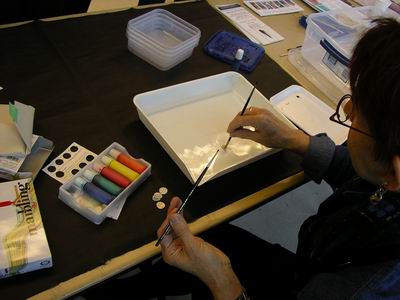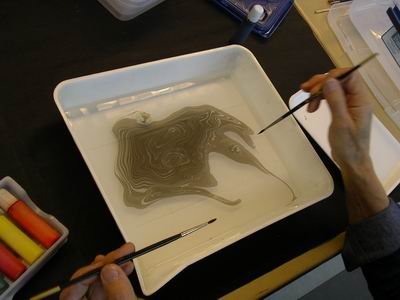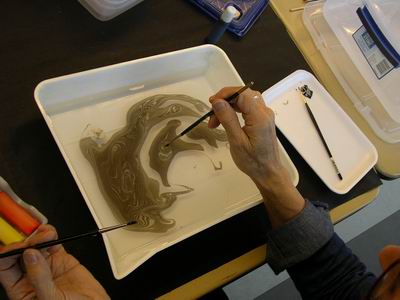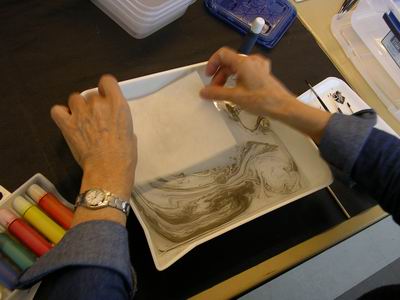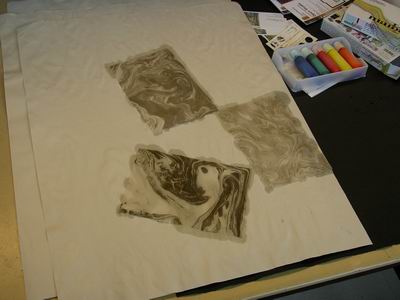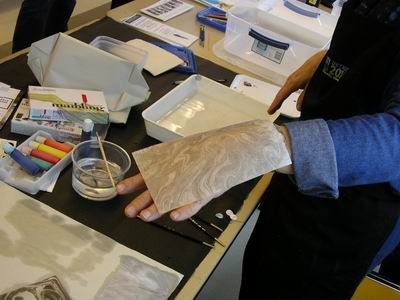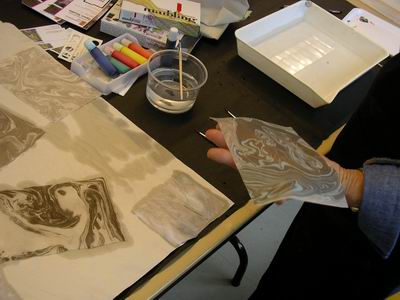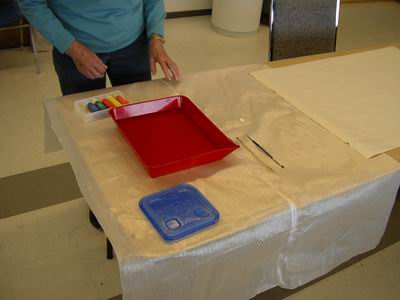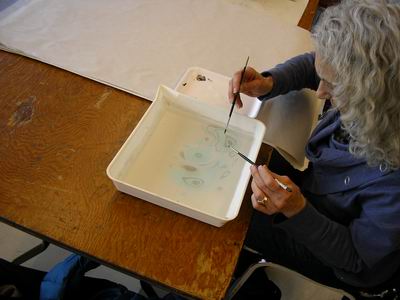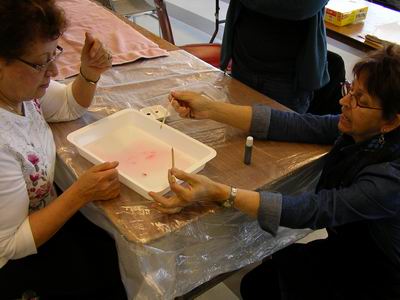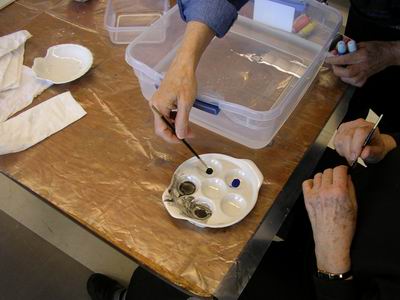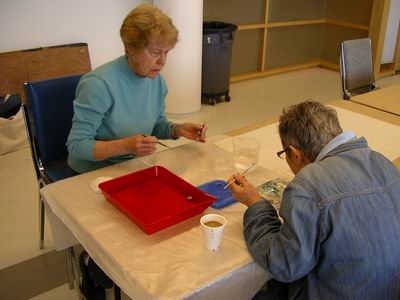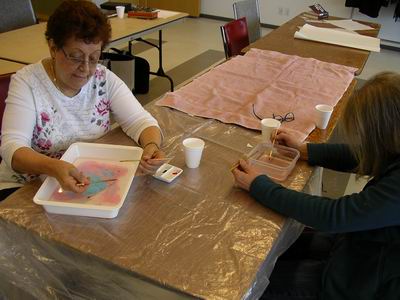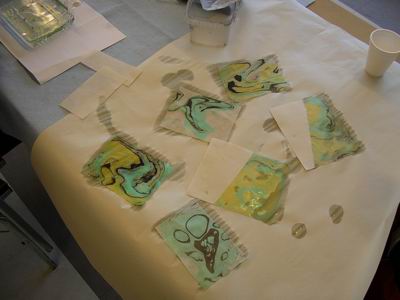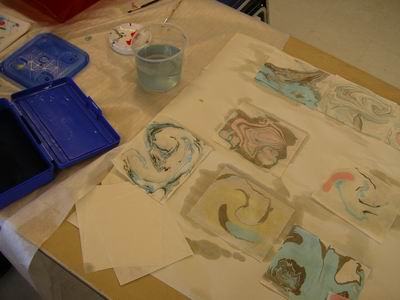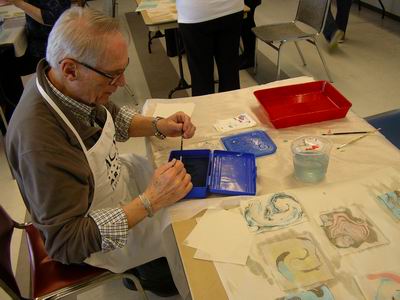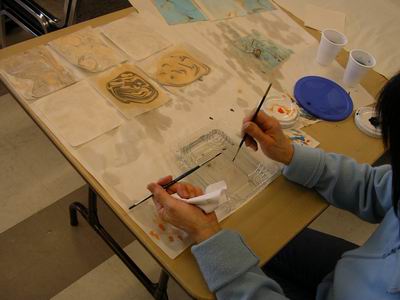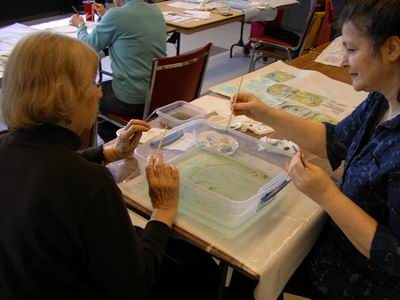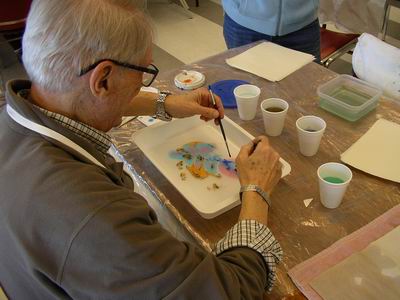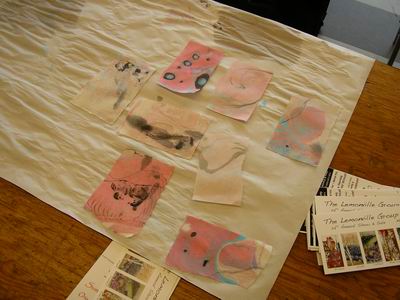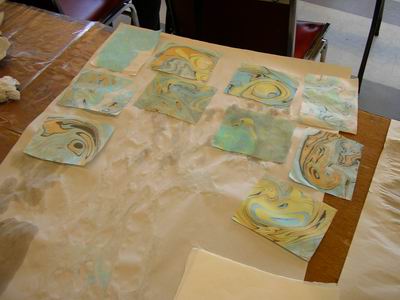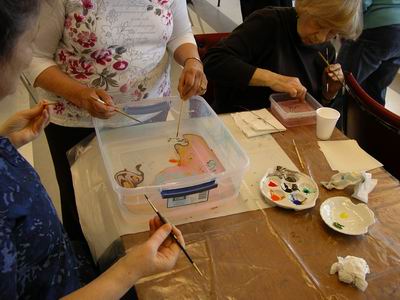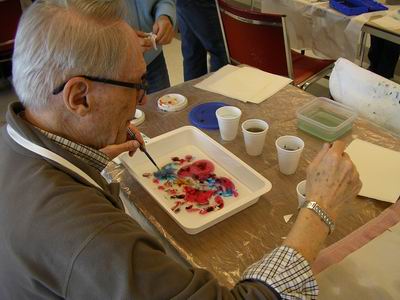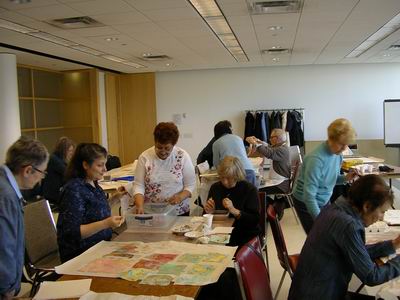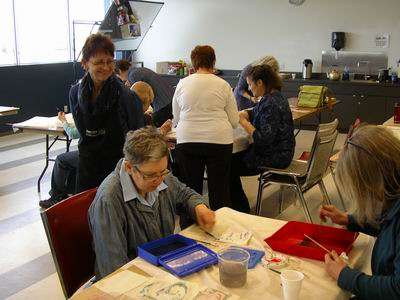Suminagashi with Liz Menard - April 8th, 2017
Suminagashi or paper marbling is an old art form that continues to this day. You add ink to water and create a design in the water. Then you transfer the water design to paper. Liz Menard, our instructor, began by showing the artists at her workshop the tools required: marbling ink, a basin of water, two small brushes, and some paper dots that help get your suminagashi art started.
Lightly touching the water with a small drop of ink starts the process. Start at the edge of a dot.
A design made unintentionally or intentionally develops as more ink is added.
When you want to transfer the image to paper, add the paper to the water. Note that this paper is heavier than the thin rice paper used in sumi-e painting. Liz Menard also spoke about the types of paper used during the workshop.
The suminagashi is put on other paper to dry out.
Once the drying begins, the suminagashi pattern emerges.
Liz Menard also demonstrated how to add other colours to the art.
Then it was our turn. To create suminagashi, only a basin, marbling ink and small brushes are required. A palette is also needed since you only want a small drop of the ink you use.
Watching your suminagashi take form is often contemplative.
Liz Menard helped us get started with a few tips. For example, don't knock the table where you are working.
Put small drops of marbling ink on a palette. As you work, remember which colour is on which brush.
Blowing on the water creates an interesting effect on the suminagashi.
The artists began experimenting with suminagashi.
The first results were surprisingly creative.
The results are somewhat unpredictable since a brush in the water does not have as much control as a brush on paper.
Basins that are themselves coloured such as these blue and red basins are more difficult to work with. You have a more challenging time seeing the coloured ink in the water.
Working with a clear basin or a white basin lets you see the ink easily.
Two people can create an interesting suminagashi as the colours and designs interact.
As the workshop progressed, artists added more colours to their works.
You can paint the paper before you transfer the suminagashi to it.
As the paper dries, the colours become more vivid. These smaller works can be used on cards.
The more that artists worked with the suminagasi art, the more ways they found to experiment with it.
Striking colours create vibrant suminagashi.
The workshop artists became wrapped up in their suminagashi creations.
However, Liz Menard kept a watchful eye out for anyone needing a bit of help or encouragement.
You can learn more about Liz Menard in the links section.
